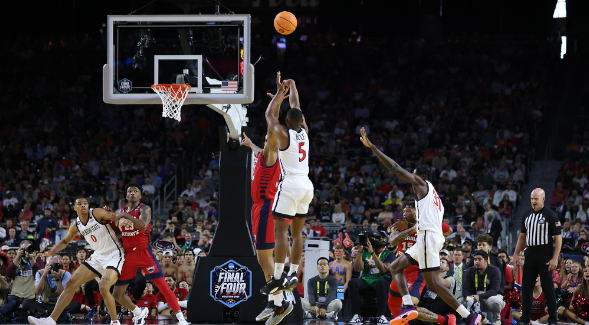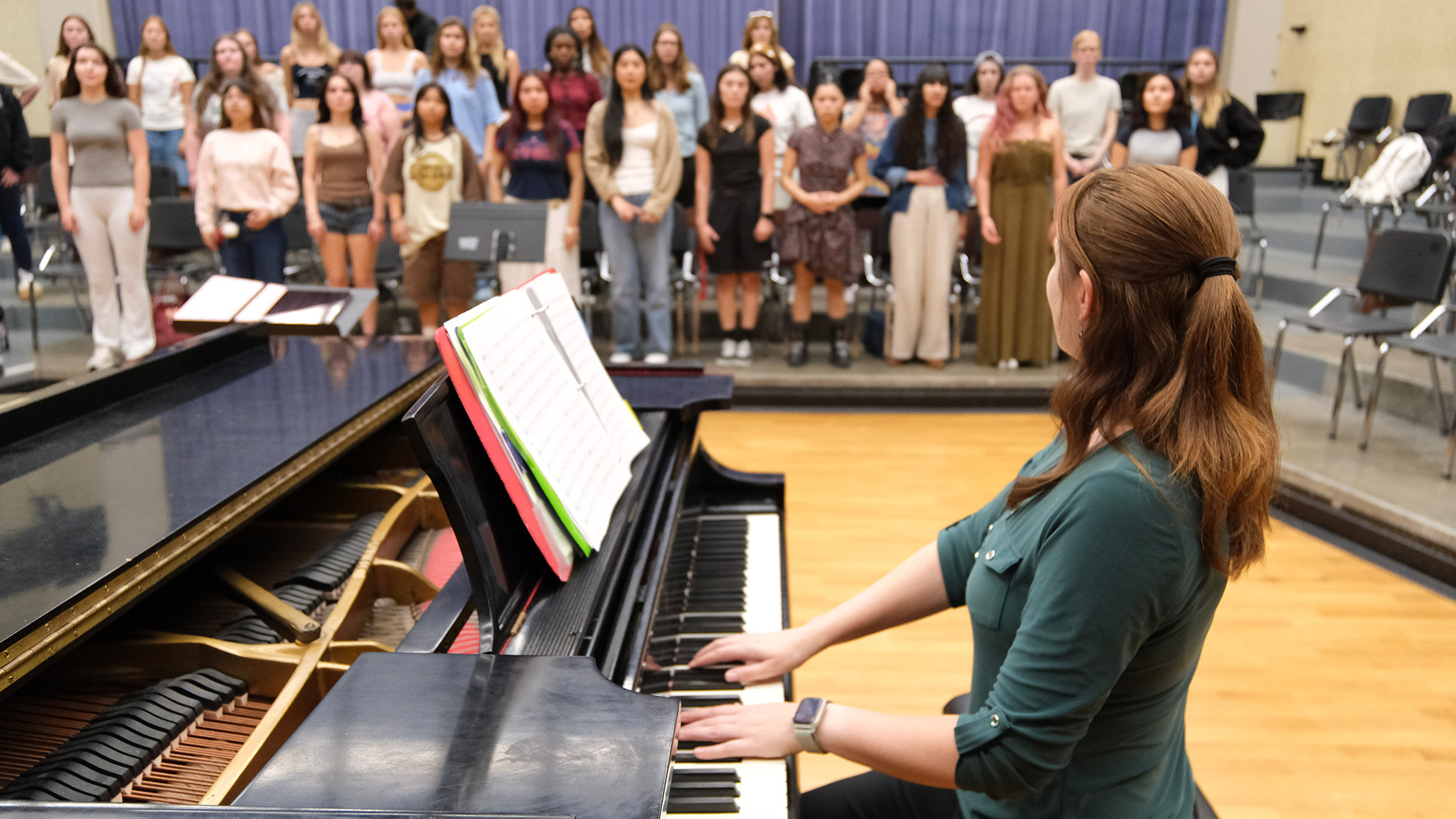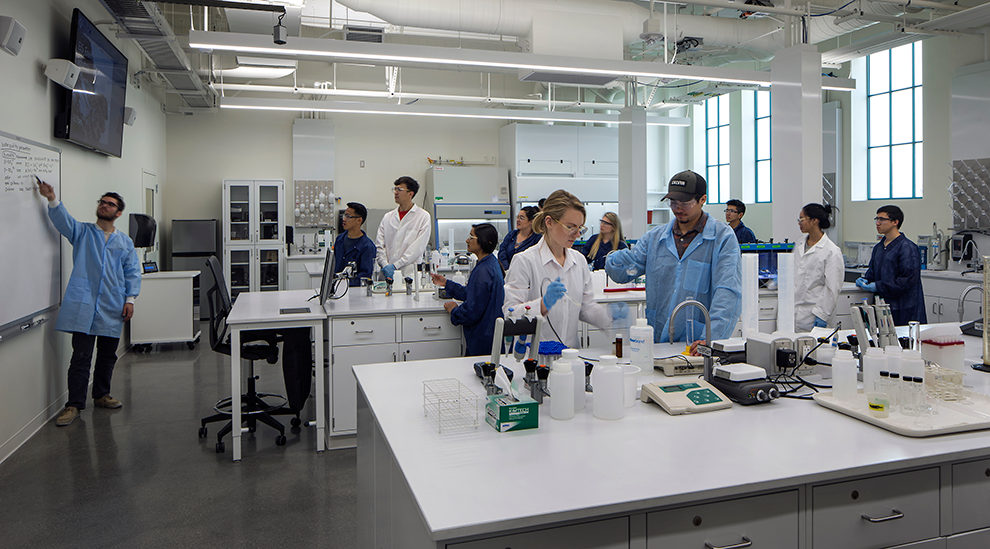National Championship Bound: The Biomechanics of SDSU Basketball
Mechanical engineering professor George Youssef speaks with SDSU on the biomechanics of shooting a basketball and preventing injuries in high-stakes conditions.

With the incredible shotmaking of San Diego State University Men’s Basketball’s Lamont Butler and Matt Bradley resulting in the Aztecs headed to their first-ever NCAA National Championship game, it’s no wonder why the nation’s eyes are on SDSU.
Shooting a basket does have a science to it - which relates to biomechanics, or the application of mechanical principles to living organisms like the human body playing basketball.
Mechanical engineering professor George Youssef’s work focuses on investigating and understanding the mechanics of polymers, composites, and smart materials. As founder of the Experimental Mechanics Laboratory (EML) at San Diego State University, his team conducts applied biomechanics research through testing engineered materials used as liners in sports helmets and protective gear to reduce the effect of impacts such as concussions and mechanical behavior of synthetic surrogates such as skull and bones.
SDSU NewsCenter spoke with Youssef to learn more about how biomechanical engineering relates to the Aztecs’ championship game versus University of Connecticut tonight and what it is about the team’s shooting and injury-prevention techniques that make them effective as it pertains to biomechanics.
SDSU has a reputation for having a strong defense. What are the biomechanics involved as a defensive player?
Youssef: In terms of biomechanics, there are three concepts at play here: the body of the player itself, the basketball, and the ball-air interactions - specifically from the moment the ball leaves the hand of the player until it reaches the hoop.
The player themself wants to leverage multiple aspects– the height in sense of how you leverage the location of the joints to provide support throughout the game. Here, the focus is on avoiding exerting too much pressure which will cause fatigue and could cause an injury. Players practice how to run on the court, how to pivot their body, when to land when and how to land from a jump to ensure they aren’t straining any joints in your arm or elsewhere. The player is using all the joints to gain mechanical advantage (i.e., levers) to get a specific angle to release the ball.
Do you have any real-life examples of this balancing of the body, the basketball, and the solid-fluid interaction?
Youssef: Back in the day, Kobe Bryant got a bad shoulder injury and a lot of biomechanists said it was due to an ankle injury he’d gotten in the previous season. That being said, one of the things the players need to pay attention to is that all joints are connected kinematically through the geometry (length of each segment, degrees of freedom in each joint, and range of motion). You need to balance the forces on the body, meaning how you’re springing and moving on the court, and how you land. These forces come from the body mass of the player and the speed and acceleration (also known as inertia force). In summary, you need to balance the forces and understand the extent of each of their extremities and torso and how to balance them all.
There are some things that are out of the players’ control, like the material of the basketball. How do these materials affect performance and biomechanics?
Youssef: For a traditional basketball, you’re looking for a good coefficient of restitution, or how much energy remains in the ball after it bounces. Of course, you don’t want it to have any, because it will just fall on the floor. You don’t want it to have too much energy either, because it’ll bounce above your hand. That’s very important in the material of the ball and the air pressure in the ball. There’s science behind that, and it has to do entirely with the proper inflation of the ball. Not too stiff, not too flat.
As for non-traditional basketballs, Wilson recently announced their airless 3D printed ball, and many people had the question, “how does it bounce?” because it has no air, yet it still performs well. It’s really interesting how you can 3D print a ball that has the same coefficient of restitution, or bounciness.
SDSU’s offense moves at a high pace – we see constant activity and ball passing requiring high agility and stamina. Is there specific training that helps improve the effectiveness of this kind of offense?
Youssef: It’s important for players to practice the angle of release, which impacts where the ball ends up if it hits the hoop, for instance. Also, how far you are from the hoop when you shoot. This is the concept of projectile motion in engineering, where all these variables come into play. This involved how fast you use the ball, the player’s vs hoop’s height, and the angle of the ball being thrown.
The forces coming from your body are important in this aspect. You need to jump straight and build a lot of momentum going up, then transfer momentum to the ball to make it into the hoop.
The interaction of the ball and the air is key in this instance. When the ball travels through the air, it experiences some forces. Some of our players like to give it a backspin, which will make it move easier through the air and give the ball proper speed and trajectory as it approaches the hoop. That’s where the practice of the technique comes in.
Is a low-top shoe more effective than a high-top shoe in terms of protection and performance?
Youssef: You don’t want a big shoe because that changes your kinematics, or balance of forces. You want a very small shoe - some argue you should even go barefoot, but you shouldn’t go barefoot, because you’re applying a lot of the pressure from jumping and running to your joints. You want a material that is cushioning, so it absorbs enough energy so you don’t feel all the active energy back in your joints, but springy so it propels you forward. Recently, researchers have been working on creating 3D-printed soles that can absorb this energy.
How is your Experimental Mechanics Laboratory working to alleviate the likelihood of these kinds of injuries in sports?
Youssef: The microstructure of these materials matter. Our Experimental Mechanics Laboratory has created a superior impact mitigating foam to prevent injuries and to absorb energy. We forecast it can be used for football and lacrosse helmets, body armors, and other sports gear.
This interview has been edited for length and clarity.
About SDSU College of Engineering: The college delivers a broad-spectrum, world-class engineering education, combined with practical research experience. All departments in the College are in the Top 25 for generating engineering workforce in the US. The College now occupies six buildings across campus with expansion planned in the newly acquired Mission Valley campus. The Aerospace Engineering graduate program is ranked 50th in the nation by U.S. News, and in the last six years, over 60% of the faculty are new hires and research award dollars have tripled. The college has earned 9 NSF CAREER Awards in the last two years. SDSU Engineering is dedicated to innovative education, discovery, and dissemination of knowledge.



